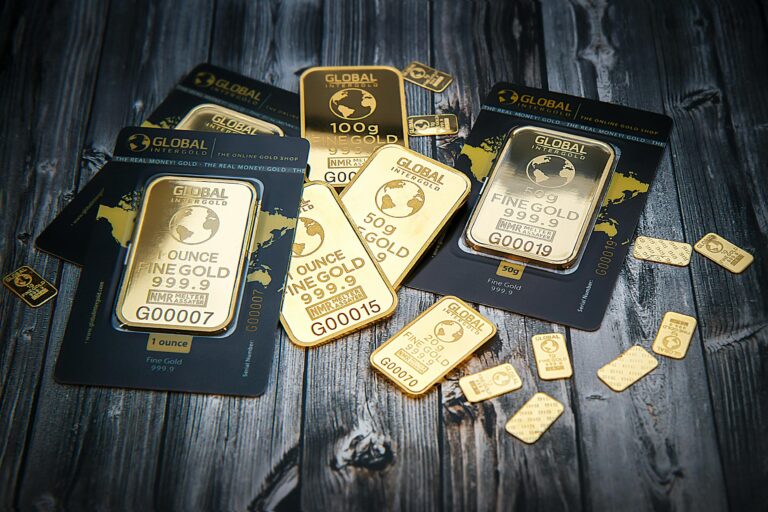
You have undoubtedly seen multiple mentions of NIFTY 50 in news headlines. Almost daily, NIFTY 50 charts are displayed in newspapers and on TV, and financial gurus frequently refer to the NIFTY 50 when forecasting stock market movements. However, what exactly is this NIFTY 50 that you hear about all the time?
We’ll cover all you need to know about NIFTY 50 and how to invest in it to generate significant long-term wealth in this blog.

The top 50 large-cap firms in India that are leaders in their respective industries make up the NIFTY 50 index. Thus, only a small number of India’s largest and most well-known businesses are included in this index.
A little later in this blog, we will discuss the methodology used to choose these top 50 large-cap firms based on their free-float market cap. To keep things easy for the time being, the top 50 large-cap Indian companies have been added into the NIFTY 50 index. Additionally, an imaginary portfolio that might represent the entire movement in the Indian stock market is created using the index.
| Company & Stock Symbol | Weightage | Industry |
| HDFC Bank (HDFCBANK) | 13.77% | Financial Services |
| Reliance Industries (RELIANCE) | 9.56% | Oil & Gas |
| ICICI Bank (ICICIBANK) | 7.87% | Financial Services |
| Infosys (INFY) | 6.01% | Information Technology |
| ITC (ITC) | 4.55% | FMCG |
| Tata Consultancy Services (TCS) | 4.04% | Information Technology |
| Larsen & Toubro Ltd (L&T) | 3.84% | Construction |
| Axis Bank (AXISBANK) | 3.13% | Financial Services |
| Kotak Mahindra Bank (KOTAKBANK) | 3.04% | Financial Services |
| Hindustan Unilever (HINDUNILVR) | 2.93% | FMCG |
| State Bank of India (SBIN) | 2.77% | Financial Services |
| Bharti Airtel (BHARTIARTL) | 2.56 | Telecommunication |
| Bajaj Finance (BAJFINANCE) | 2.29% | Financial Services |
| Asian Paints (ASIANPAINT) | 1.77% | Consumer Durables |
| Mahindra & Mahindra (M&M) | 1.45% | Automobile |
| Maruti Suzuki India (MARUTI) | 1.53% | Automobile |
| HCL Technologies (HCLTECH) | 1.49% | Information Technology |
| Sun Pharma (SUNPHARMA) | 1.30% | Healthcare |
| Titan Company (TITAN) | 1.45% | Consumer Durables |
| LTIMindtree Ltd (LTIM) | 1.23% | Information Technology |
| Adani Enterprises (ADANIENT) | 0.84% | Metals & Mining |
| Tata Steel (TATASTEEL) | 1.05% | Metals & Mining |
| Bajaj Finserv (BAJAJFINSV) | 0.97% | Financial Services |
| UltraTech Cement (ULTRACEMCO) | 1.12% | Construction Materials |
| NTPC (NTPC) | 1.02% | Power |
| IndusInd Bank (INDUSINDBK) | 1.03% | Financial Services |
| Power Grid Corporation (POWERGRID) | 0.98% | Power |
| JSW Steel (JSWSTEEL) | 0.81% | Metals & Mining |
| Tata Motors (TATAMOTORS) | 1.14% | Automobile |
| Nestle India (NESTLEIND) | 0.95% | FMCG |
| Hindalco Industries (HINDALCO) | 0.73% | Metals & Mining |
| Grasim Industries (GRASIM) | 0.78% | Construction Materials |
| Tech Mahindra (TECHM) | 0.86% | Information Technology |
| Adani Ports and SEZ (ADANIPORTS) | 0.69% | Services |
| Cipla (CIPLA) | 0.62% | Healthcare |
| Wipro (WIPRO) | 0.74% | Information Technology |
| Oil & Natural Gas Corp. (ONGC) | 0.74% | Oil & Gas |
| HDFC Life Insurance Co. (HDFCLIFE) | 0.72% | Financial Services |
| SBI Life Insurance Co. (SBILIFE) | 0.68% | Financial Services |
| Dr. Reddy’s Laboratories (DRREDDY) | 0.67% | Healthcare |
| Britannia Industries (BRITANNIA) | 0.68% | FMCG |
| Coal India (COALINDIA) | 0.62% | Oil & Gas |
| Tata Consumer Products (TATACONSUM) | 0.58% | FMCG |
| Apollo Hospitals Enterprise (APOLLOHOSP) | 0.57% | Healthcare |
| Eicher Motors (EICHERMOT) | 0.62% | Automobile |
| Divi’s Laboratories (DIVISLAB) | 0.54% | Healthcare |
| Bajaj Auto (BAJAJ-AUTO) | 0.64% | Automobile |
| UPL (UPL) | 0.44% | Chemicals |
| Hero MotoCorp (HEROMOTOCO) | 0.44% | Automobile |
| Bharat Petroleum Corp. (BPCL) | 0.43% | Oil & Gas |
HOW IS NIFTY 50 CALCULATED?
It is calculated by applying the free float market capitalization examine to the NIFTY 50.
The current market capitalization of all the stocks that make up the NIFTY 50 index is divided by the market capitalization of the base period to determine the index’s value.
The weighted market cap of all 50 companies is the current market cap. It is computed by multiplying the market price of a share by the number of free float shares. The total number of outstanding shares, less shares held by promoters, the government, trusts, etc., is represented by free float shares.
With a base value of 1000 and a base market capitalization of Rs. 2.06 trillion, the NIFTY 50 is based on a date of November 3, 1995.
The NIFTY 50 calculations formula is as follows:
Index Value = (Current Market Cap / Base Market Capital) x 1000
In this case,
The weighted market cap determined for the index is the current market cap.
The weighted market cap of each of the 50 index companies during the base period is known as base market capital.
The NIFTY 50 index’s value in the base date is 1000.
HOW STOCKS ARE BEEN SELECTED TO BE PART NIFTY 50?
The selection of the 50 stocks for the NIFTY 50 index is based on a set of rules. The following are some of the guidelines and standards that form the foundation of NIFTY 50:
Universe: Listing on the National Stock Exchange (NSE) is the main requirement for a company to be included in the NIFTY 50. Additionally, a company’s equities must to be traded in the NSE’s Futures & Options market. The company cannot be a part of NIFTY 50 if it is not listed and traded on NSE.
Basic Construct: Based on their free-float market capitalization, the top 50 large-cap companies are chosen from the NSE universe. The number of shares that are freely available on the market multiplied by the stock price of the company yields the free-float market cap. For example, a company’s market capitalization is Rs. 50 lakh if it has 1 lakh shares that are easily accessible in the market and each share is priced at Rs. 50.
Liquidity: A stock’s liquidity is a critical component that must be taken into account before it can be added to the NIFTY 50. This means that equities included in the NIFTY 50 index need to have a large trading volume and be simple to purchase and sell.
Rebalancing and reconstitution: The NIFTY 50 index’s 50 firms are not fixed. The index rebalances every year in June and December on a semi-annual basis. The NIFTY 50 index eliminates stocks that would have seen a decline in market value, suspension, or delisting during the rebalancing process. Emerging stocks that would have seen a rise in market capitalization take the place of the deleted stocks. The automatic rebalancing procedure makes the NIFTY 50 more exposed to emerging industries and stocks.





